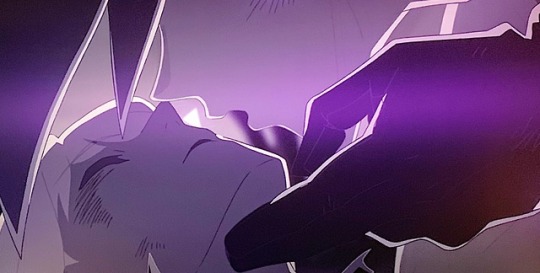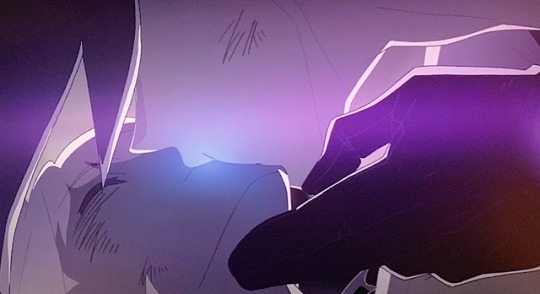Don't wanna be here? Send us removal request.
Photo

I honestly think that like all of my issues with the plot structure of Inquisition can be summed up by this sign. It’s right next to a path up a hill at the Storm Coast, one surrounded by little boulders and rocks that have fallen. But at no point during gameplay does a rock fall.
Why bother putting this sign and the fallen rocks there if you’re not going to have a rock fall on the player?
Why include blatant character flaws in the companions that don’t serve much purpose beyond “rounding them out” by existing? Why have Dorian be focused on reforming all of Tevinter’s issues except slavery if it only comes up exactly one time in non-essential dialogue? That is a HUGE-ASS FLAW. Why give Sera such vitriolic self-hatred and internalized racism when oppressed elves are precisely the sort of ‘little people’ that she fights for? Why can the Inquisitor not talk about these things with them and help them realize that they need to change their thinking?? Can you IMAGINE the character arc Sera could have had???
Why can Clan Lavellan be killed if no one in Skyhold ever acknowledges it? The only possible purpose it could serve would be to provide emotional stakes for the odds the player is up against, but nothing emotional actually comes of it.
Why can you customize Skyhold if none of those changes make a difference? Why can you build up over 300 power at the War Table if it’s completely useless outside of main quests, of which there are ridiculously few?
Why have a storyline about Lyrium addiction among Templars if it’s never acknowledged that said addiction is entirely the Chantry’s fault?Why include Fiona in the game if all she ever does is stand in a hallway? For that matter, why make an entire game leading up to the mage rebellion if the ACTUAL BEGINNING of it is shunted off into a book that a lot of players won’t know exists and the rebellion itself is just going to be background noise in the next game?
Why are Alistair/Stroud/Loghain and Hawke in the game for literally about 1 hour (out of a solid 90, generally) if one of them has to die? The Inquisitor doesn’t know them. New players don’t know them. To have an actual emotional impact in-universe, they should be legitimately introduced into the story in a significant way. Instead they appear, die/leave for Weisshaupt, and disappear again. They do nothing; things happen to them.
There are so many signs for falling rocks, but no rocks actually fall.
17K notes
·
View notes
Photo



Solas in DA4: concept art and model representative of game in development [x]
“They call me the Dread Wolf. What will they call you when this is over?” [new dialogue line]
1K notes
·
View notes
Text
The Mortar and Pestle
I can think of no tool in a witches’ arsenal which requires more finesse than the mortar and pestle. So often people will pick one up, looking forward to pounding and grinding, not realizing it takes so much more than brute force. Resins will gum up, herbs will be stirred with little to no effect, roots will refuse to powder, all causing a great deal of frustration to those who so looked forward to using this marvelous set. But here’s the secret to using a mortar and pestle: brute force is rarely ever needed, and will not work well in most cases.
Working with resins, herbs, spices, flowers, and more can be maddening with a mortar and pestle, as each of these requires different ways of grinding and working. You cannot approach each the same, as each is entirely different. Simply pounding away at everything will not produce the fine powders so often hoped for. In some cases, a powder is simply not attainable. But, with a little patience and cunning, the tool will serve you well. But before we get to any of that, it’s important to note that if you’re having excessive trouble with working with a mortar and pestle, and the set came from a specialty occult shop, it might just be best to toss it aside. Most of the time these sets are too smooth, not having what it takes to actually grind the materials down. A mortar and pestle made for culinary use is usually the best way to go. Such sets are generally not expensive, and will last you a lifetime.
With that in mind, left’s get right to it! Below are a few examples of the different grinding methods I use.
Resins- Resins can be notoriously difficult to powder properly, often succumbing to the friction between the mortar and pestle and gumming up. Even pounding the resinous chunks too hard will result in sticky pieces. When it comes to tree resins, you must consider what it is you are grinding. Don’t pound the chunks with all your might, or try to grind them with force. No, resins require a delicate touch. Use the pestle to gently hit the chunks until they crack apart. Then use the pestle smoothly, gently, with patience. Resins will take time to powder, giving you plenty of chance to focus your will as you work. Before you know, the gently circular grinding motion will produce a fine powder for any use. Be aware, though, that you cannot use one technique for all resins. Copal powders easier than Dragon’s Blood, which powders far easier than Myrrh.
Dried Herbs and Flowers- Another example of a place where brute force will not serve you, though dried herbs and flowers are much more forgiving. Rosemary, jasmine, lavender, and vervain are all good examples here. Simply stamping at these will not be enough. Often times it takes a gentle grinding of these ti create a suitable material for a powder. Some dried herbs, like mugwort, simply will not powder, whereas Jasmine flowers will be reduced to a fine powder in mere seconds. As with resins, take your time. Be gentle. When you grind dried herbs, you’re either working with botanicals you have dried yourself, or that come prepackaged. If you’ve dried them yourself, you’ll have a much easier time. Prepackaged herbs, while useful at times, are very difficult to grind down any further than the state in which they are purchased. It’s possible to do though with yet more patience.
Dried Roots, Barks, and Berries- Don’t let anyone tell you these are easy to grind because holy mother, that is a lie. Dried roots, bark, and berries are prbably the hardest thing I’ve ever had to grind in my life, and these botanicals are some of the only ones where brute force is your friend. Each of them requires a great deal of power to break down. However, once you’ve pounded them apart, the force is no longer needed. You’ll still have to give it some welly, but it won’t require near as much effort once you’ve broken the materials down. Mandrake root is a good example of this. When dried, mandrake becomes wood-like. It’s very difficult to break down. However, once you’ve got it worked down, you can powder it as you would anything else. Other roots are not so forgiving which is why, if you pull your iwn roots, I encourage you to slice the root pieces into disks. These are much more managable than even small pieces, as the larger surface area gives you more to work with. Bark should be handled much the same. As far as berries, you have to be sure they’re comoletely dry before attempting to work then down. Some berries are far easier to powder than others. Juniper berries (not being real berries) will give you hell. But, as always, keep your patience. It will serve you well.
Fresh Botanicals- This is where you’ll want to forget about powdering. When it comes to fresh botanicals, it’s often only feasable to draw out the juices via stamping and bruising of leaves and flowers, or making a paste by the addition of warm water. Roots will create a paste of their own, as will mucilagenous plants like aloe-vera and marshmallow. Berries will simply muddle down. If you’re trying to get seeds from fruits or berries, you can use a mortar and pestle to (gently) muddle the materials, then add water. After some time, the seeds will sink to the bottom while the body of the fruit/berry floats. Using fresh botanicals in a mortar and pestle can create a great poultice, as well as helping release the volatile oils and constituents of a plants for an infusion or decoction.
However you choose to use your mortar and pestle, remember that it will take time to really understand the tool, and longer to get the hang of it. However, the nortar and pestle is, I feel, and integral part of witchcraft practice. One can learn so much from working their botanicals down, smelling them, hearing them, feong what it takes to break them down, and more. While the mortar and pestle have a great deal of uses beyond just grinding, it’s a great place to start. Happy grinding!
10K notes
·
View notes
Text
playing dragon age inquisition is just
*hits the search button* *hits the search button* *hits the search button* *hits the search button* *falls off a cliff* *hits the search button* *hits the search button* *hits the search button* *runs away from a dragon* *hits the search button* *hits the s
5K notes
·
View notes
Photo


6. The Lover / 7.The Chariot
ⓒMio Im
http://instagram.com/cochlea1313
8K notes
·
View notes
Text
everyone: HAPPY NEW YEAR! GOODBYE LAST DECADE, HELLO NEW ONE! 2020 WILL BE THE YEAR OF PRODUCTIVITY, POSITIVITY, AND GOOD THINGS!
me, having my millionth existential crisis and painfully aware of the passage of time:

7K notes
·
View notes
Audio
2K notes
·
View notes
Audio
7K notes
·
View notes




















